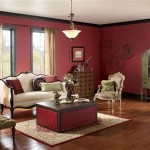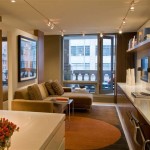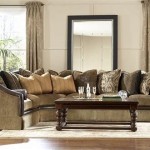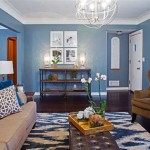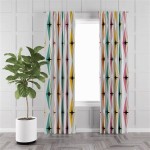Light Blue Paint for Living Room
Light blue paint offers a versatile and appealing option for living room walls. Its calming and airy qualities can transform a space, creating a serene and inviting atmosphere. Selecting the right shade of light blue, however, requires careful consideration of factors such as natural light, room size, and existing décor. This article explores the nuances of incorporating light blue paint into a living room design.
Understanding the Psychology of Light Blue
Light blue is often associated with tranquility, serenity, and peace. Its connection to the sky and water evokes a sense of calm and openness. In a living room, these qualities can contribute to a relaxing and welcoming environment. Lighter shades of blue can also create an illusion of spaciousness, making them a suitable choice for smaller living rooms. Conversely, in larger rooms, light blue can help to create a sense of intimacy and warmth, preventing the space from feeling too vast or impersonal.
Choosing the Right Shade of Light Blue
The spectrum of light blue hues ranges from pale, almost white shades to more saturated, vibrant tones. Each shade evokes a different mood and can impact the overall aesthetic of the room. Soft, pastel blues create a gentle and airy atmosphere, ideal for a relaxed and informal living room. Slightly deeper shades, such as sky blue or robin's egg blue, can add a touch of vibrancy and energy while still maintaining a sense of calm. The amount of natural light in the room plays a crucial role in how the chosen shade will appear. Rooms with ample natural light can accommodate slightly deeper shades, while rooms with limited natural light benefit from paler hues to maximize brightness.
Testing paint samples on the wall is essential to determine how the color interacts with the room's lighting throughout the day. Observe how the shade appears in both natural and artificial light to ensure it aligns with the desired aesthetic. Consider the room's orientation as well. North-facing rooms tend to receive cooler light, which can make blue hues appear more subdued. South-facing rooms, on the other hand, receive warmer light, which can enhance the vibrancy of blue tones.
Coordinating Light Blue with Existing Décor
Light blue provides a versatile backdrop for various design styles, from traditional to contemporary. When integrating light blue walls into an existing décor scheme, consider the existing furniture, flooring, and accessories. Neutral-colored furniture, such as white, cream, or gray, complements light blue walls beautifully, creating a clean and sophisticated look. Natural materials like wood and rattan also pair well with light blue, adding warmth and texture to the space.
For a bolder approach, consider incorporating accent colors that complement light blue. Coral, yellow, and green create a lively and energetic contrast, while shades of pink and lavender offer a softer, more romantic feel. Metallic accents, such as gold or silver, can add a touch of glamour and sophistication. Textiles, such as curtains, rugs, and throw pillows, provide an opportunity to introduce patterns and textures that complement the light blue walls. Consider using patterns that incorporate shades of blue, as well as complementary colors, to create a cohesive and visually appealing space.
Accentuating Light Blue Walls
Artwork and decorative accessories can further enhance the impact of light blue walls. Consider using artwork with complementary colors or contrasting tones to create visual interest. Mirrors can help to reflect light and create a sense of spaciousness, especially in smaller living rooms. Incorporating plants and greenery can further enhance the calming and natural feel of the space, complementing the airy qualities of light blue. The choice of lighting fixtures also plays a significant role in the overall ambiance. Warm-toned lighting can create a cozy and inviting atmosphere, while cooler-toned lighting can enhance the crispness and freshness of the light blue walls.
Consider the architectural details of the room, such as moldings and trim. Painting these elements in a contrasting color, such as white or a slightly darker shade of blue, can create a visually appealing contrast and highlight the architectural features of the space. The use of different paint finishes, such as matte, eggshell, or satin, can also impact the overall look and feel of the room. Matte finishes create a softer, more subtle look, while satin finishes offer a slightly more reflective and durable surface.
Long-Term Considerations
Light blue paint offers a relatively timeless choice for living room walls. Its versatility allows for adaptation to changing décor trends and personal preferences over time. However, it's important to consider the long-term implications of the chosen shade. While lighter shades of blue can brighten a space, they may also show scuffs and marks more easily than darker shades. Selecting a durable paint finish and performing regular cleaning can help maintain the pristine appearance of the walls over time. Furthermore, while light blue is generally considered a calming color, extremely pale shades can sometimes feel sterile or impersonal. Balancing the lightness of the blue with warmer accents and textures can help create a more inviting and comfortable living space.

This Popular Blue Paint Is Great For Rooms With Natural Light Paintzen

30 Light Blue Paint Colors That Will Give Your Walls A Lift Living Room Rooms

Blue Paint Ideas Beamin Moore

10 Lovely Light Blue Paint Colors For A Bedroom

Painting Our Living Room Light Blue Emily A Clark

Blue Light 7531 House Wall Painting Colour Asian Paints

25 Of The Best Blue Paint Color Options For A Living Room Light Colors

50 Blue Room Decorating Ideas How To Use Wall Paint Decor

Light Blue Wall Paint Cottage Living Room Beamin Moore Oystershell Coastal

Color Guide How To Use Light Blue

